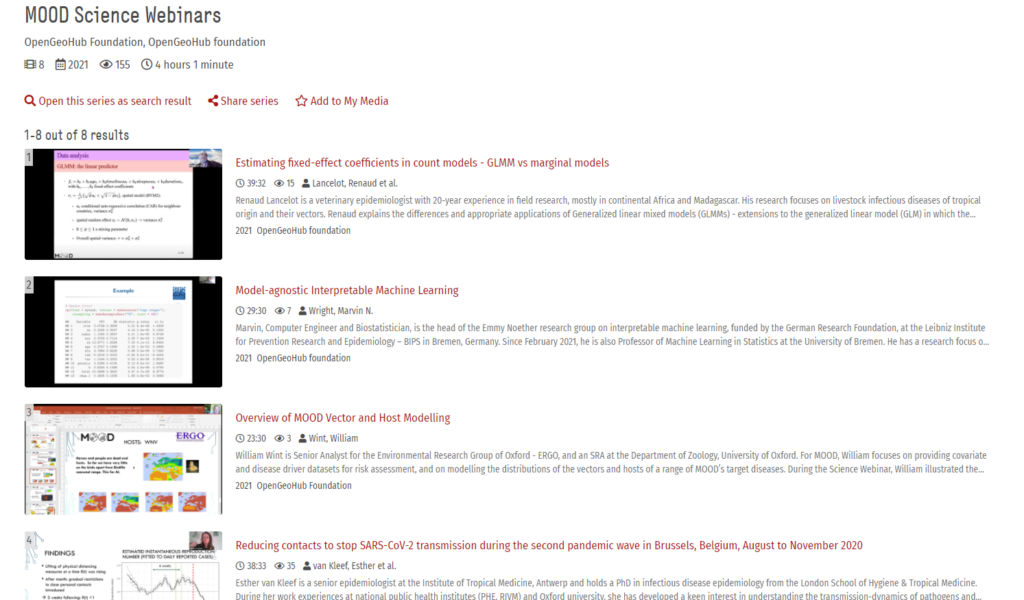Every last Wednesday of the month, MOOD hosts a series of science webinars inviting two leading experts to share their research work on disease surveillance and modeling in data science, impact of global warming on disease outbreaks in the future, and building of one-health systems across Europe and the world. With the MOOD science webinars we aim at bringing the leading scientists and professionals in the field to discuss important recent discoveries and discuss implications of their work. This blog reports on insightful talks happened during the science webinars.
Generally, we invite an internal speaker (from the MOOD consortium), and one external presenter for a 15 minutes talk each. After each presentation, speakers can interact with the audiance for Q&As. After the webinar session, MOOD communication team conducts a 15 minutes interview to share interesting insights about MOOD research and related fields. Videos are then post-edited and published via av.tib.eu so that each video receives DOI and can be cited / accessed without restrictions.
Do you want to present in the next MOOD Science Webinar?
We are always looking for volunteers who are enthusiastic to share their scientific outcomes with the MOOD partners. We especially encourage presentations on published research work focusing on: how was the work implemented? what were the main discoveries? what did and did not work out the way you expected? and what are the implications of the main discoveries, especially in the context of the MOOD project objectives?
Contact: media-office@opengeohub.org
Technical information:
All presentations will be video-recorded using the Zoom cloud-recording service, then edited and formatted by the OpenGeoHub multimedia team. Examples of video-productions can be watched via TIB AV-Portal.


Watch the webinars and interviews here.
Latest posts
- Monitoring Outbreak events for Disease surveillance in a data science context 2020-2024: A European epidemic intelligence platform to support infectious diseases surveillance and covariate data accessibility
- The MOOD project hosted an engaging Mini Module during the ESCAIDE week in Stockholm
- Training on ArbocartoR
- A milestone in the co-conception of the MOOD platform
- Innovations to face disease emergence in the era of climate change: from research to technological development













